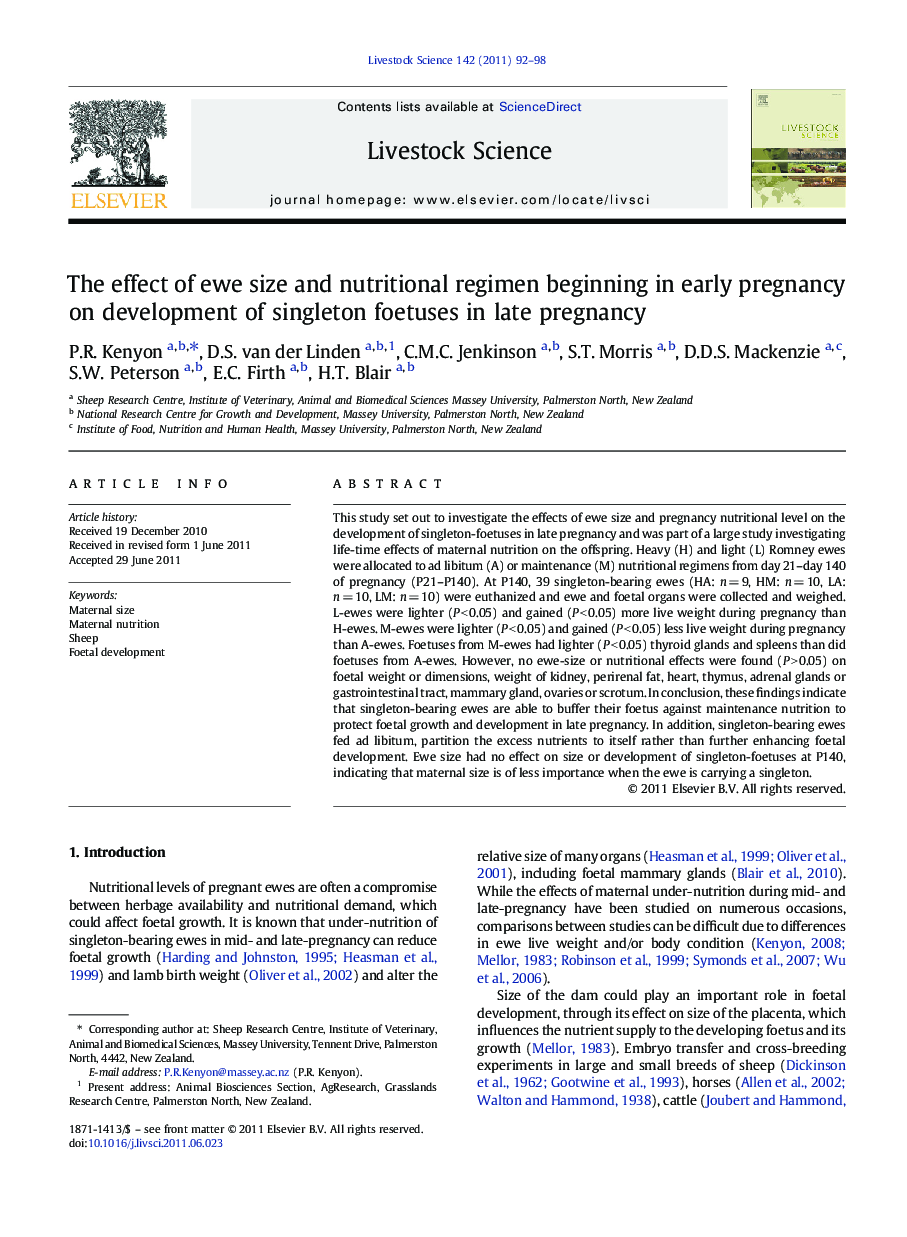| Article ID | Journal | Published Year | Pages | File Type |
|---|---|---|---|---|
| 5790742 | Livestock Science | 2011 | 7 Pages |
Abstract
This study set out to investigate the effects of ewe size and pregnancy nutritional level on the development of singleton-foetuses in late pregnancy and was part of a large study investigating life-time effects of maternal nutrition on the offspring. Heavy (H) and light (L) Romney ewes were allocated to ad libitum (A) or maintenance (M) nutritional regimens from day 21-day 140 of pregnancy (P21-P140). At P140, 39 singleton-bearing ewes (HA: n = 9, HM: n = 10, LA: n = 10, LM: n = 10) were euthanized and ewe and foetal organs were collected and weighed. L-ewes were lighter (P < 0.05) and gained (P < 0.05) more live weight during pregnancy than H-ewes. M-ewes were lighter (P < 0.05) and gained (P < 0.05) less live weight during pregnancy than A-ewes. Foetuses from M-ewes had lighter (P < 0.05) thyroid glands and spleens than did foetuses from A-ewes. However, no ewe-size or nutritional effects were found (P > 0.05) on foetal weight or dimensions, weight of kidney, perirenal fat, heart, thymus, adrenal glands or gastrointestinal tract, mammary gland, ovaries or scrotum. In conclusion, these findings indicate that singleton-bearing ewes are able to buffer their foetus against maintenance nutrition to protect foetal growth and development in late pregnancy. In addition, singleton-bearing ewes fed ad libitum, partition the excess nutrients to itself rather than further enhancing foetal development. Ewe size had no effect on size or development of singleton-foetuses at P140, indicating that maternal size is of less importance when the ewe is carrying a singleton.
Related Topics
Life Sciences
Agricultural and Biological Sciences
Animal Science and Zoology
Authors
P.R. Kenyon, D.S. van der Linden, C.M.C. Jenkinson, S.T. Morris, D.D.S. Mackenzie, S.W. Peterson, E.C. Firth, H.T. Blair,
